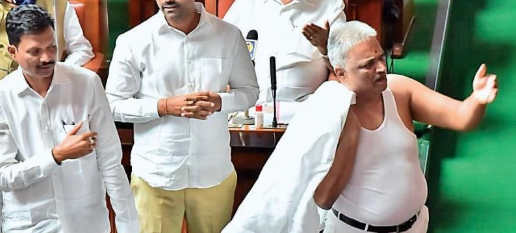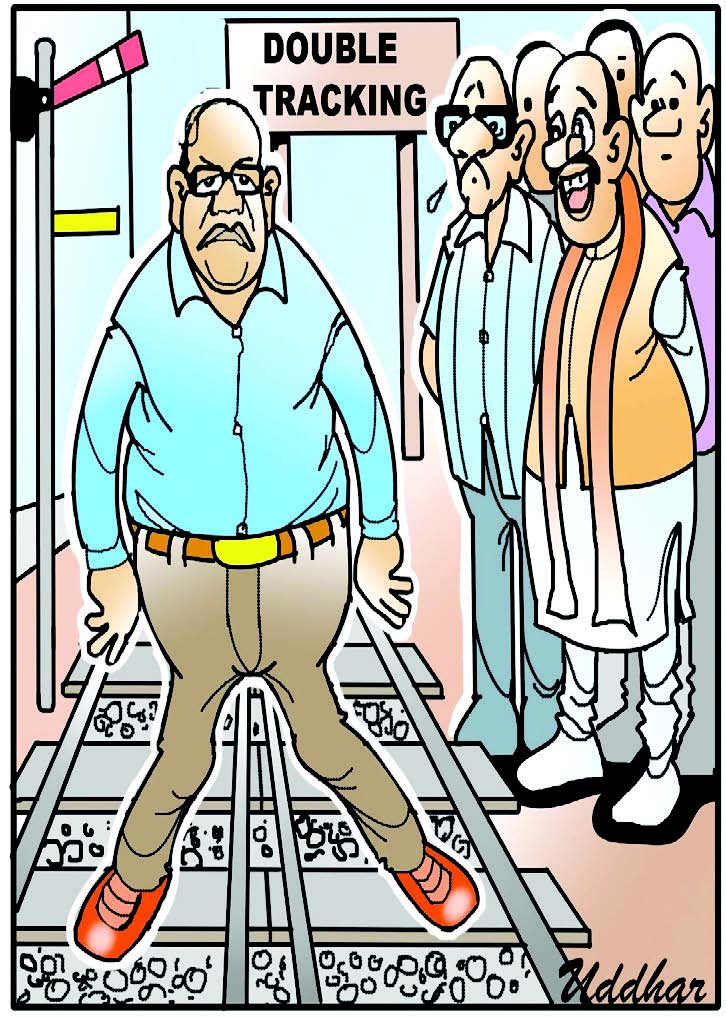
Pradeep Lawande
An unusual incident took place in the Legislative Assembly of Karnataka state last month. As a sign of protest for not meeting his demand, one MLA of the opposition party went straight to the well of the hall and by standing there, he removed his shirt! The speaker of the House suspended this representative for one week for his above offence. In fact not wearing of shirt does not amount to an offence. Our Father of the Nation never wore any shirt. Perhaps the speaker in question might have thought thus: This time the guy removed his shirt. May be that next time he might remove his pants!
People adopt various forms to express their protests. Showing of black flags is one of them. In 1928 most of the Indian Leaders then as a sign of protest greeted a group of people known as Simon Commission appointed by the Government of Britain then with black flags and with a slogan “Simon go back”.
May be that black colour is a symbol of protest. Many self respecting Goans celebrate Feb 4 as the official Language Day. But some opponents of Konkani earlier observed this day as Black Day. Later on they stopped pursuing this stupidity. Tar is black in colour. This is why some people rub tar to the written slogans and principles of their opponents. Some English words with the prefix ‘black’, like black list, blackmail, black market and black sheep are infamous. I remember prior to the occurrence of the historic opinion Poll, some youth of Goa arranged a big funeral procession in Margao city. Four youngsters dressed in black walked in the middle of that long march holding a black coffin on which was written “Merger” in bold letters. And the main slogan of that procession was “Merger? Never”!
We employ different methods for expressing our grievances. We make effigy of a leader we dislike and then burn it. Organising demonstrations, giving of slogans, going on hunger strike, observing vow of silence, committing self immolation, calling for Bandh, going on mass leave and walk-outs are some of the measures that convey disapprovals. Refusing to work or slowing down of work by the employees are instances of protests.
Mahatma Gandhi strongly protested in different ways the imperialism of the British Empire. But all his protests were based on truth and non- violence.
Crying is also an effective means to achieve an end.Thirty years ago, Konkani and few other languages were eligible for their inclusion in the 8th schedule of the Indian constitution. But our politicians as usual, had no time to make the necessary laws for that purpose. One day as the parliament was in full session, one female MP from Manipur rose from her place and went straight to the well of the House. There she sat down and began crying. All the members were taken aback.
The grief of the woman was that though her mother tongue - Manipuri had fulfilled all the required conditions, it did not get national recognition. All the members fully agreed with her. The very next week , the then Home Minister of India late Shankarrao Chauvan himself introduced Bill in the LS seeking the inclusion of Manipuri, Konkani and Nepali languages in the 8th Schedule of the Constitution. And the Bill was passed unanimously in both Houses of the parliament! Such is the power of crying!
